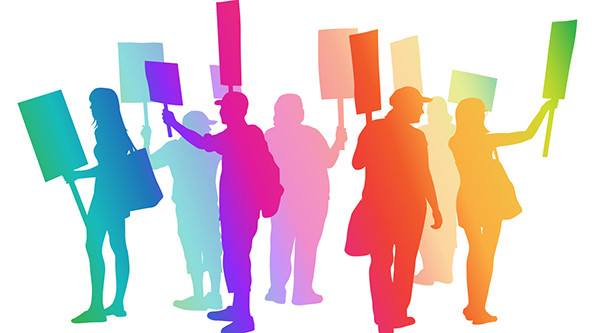 (Illustration by iStock/A-Digit)
(Illustration by iStock/A-Digit)
There is a movement to organize domestic workers, garment workers, and others in low-wage US industries. Mind you, it’s not yet comparable to the rise of industrial unions in the 1930s. But the movement is growing, and it is using new and innovative approaches to empower workers.
Today a great deal of the new worker activism takes place outside of traditional labor unions, at organizations like the National Domestic Workers Alliance and the Garment Worker Center. And the tools they rely on are often digital apps like Coworker and Action Builder. Interestingly, many of these alternative organizations and apps were created by former labor union activists and are funded by unions.
It’s an exciting development that is covered in our cover story, “Platform Power to the People,” in the Winter 2021 issue of Stanford Social Innovation Review. The authors are Sanjay Pinto, a fellow at the Worker Institute at Cornell University, and Beth Gutelius, research director of the Center for Urban Economic Development at the University of Illinois at Chicago.
I am thrilled we are running this story because we have not covered labor unions and worker activism as much as we should. It’s odd for me to write this because one of the reasons I became a journalist was to cover the labor movement. In fact, my first job after graduating from journalism school was to help write and edit the newspaper of the San Francisco Labor Council, AFL-CIO, an organization that today represents 150 unions and 100,000 union members.
Before I became a journalist, I was an active member of Service Employees International Union Local 250, working as a nurse’s aide in nursing homes and hospitals in the San Francisco Bay Area. I helped organize one nursing home and was a member of our bargaining committee.
I believed then as I do now that labor unions and other types of collective action play a critical role in providing workers with the power to negotiate better wages and benefits. People living in countries that have strong unions (like Iceland and Sweden, where 90 percent and 66 percent of workers, respectively, are in unions) have a much higher standard of living than people living in countries that don’t have strong unions (like the United States and Turkey, where just 10 percent and 8 percent of workers are in unions).
Many economists believe that one of the reasons why over the last few decades the United States has become a more unequal society with a much smaller middle class is because of the decline of private sector unions. They also believe that one of the important ways to improve the lives of ordinary Americans is to empower workers and encourage the growth of unions.
That is why the growth of this new labor movement is so important and deserves the support of all of those working to improve the lives of Americans. All too often, philanthropy, nonprofit organizations, and the government are tasked with trying to ameliorate social problems that were created because people are unable to earn enough money to provide for themselves and their family. A strong labor movement will reduce that burden and allow the social sector and government to focus on other pressing issues.
Support SSIR’s coverage of cross-sector solutions to global challenges.
Help us further the reach of innovative ideas. Donate today.
Read more stories by Eric Nee.

